Following Sputnik : Soviet Tracking Station NIP-10

The outpost at Land Measuring Point 10, more commonly referred to as NIP-10, was where Man first managed to send a message to Venus. When this happened, it was hardly a surprise to its residents—this was precisely what they intended. Furthermore, they acquired a small sense of entitlement a few years earlier, when they were the first people to see the far side of the Moon.Guard towers and soldiers of the military space forces of the USSR kept NIP-10 safe from strangers. They did their job so well, that when they left forty years later, few people even knew the place existed. The first trail of evidence surfaced in 1957, when the name Shkolnoe, suddenly appeared in the middle of maps of the Crimea. Shkolnoe, is the name of the village built to accommodate the workers and families developing NIP-10.
The few residents who stayed behind in now live in squalor. The day when Shkolnoe’s name will be stricken from maps is tangibly close. Buildings are literally crumbling. Now only a mangy barbed wire fence full of plastic bags holds the perimeter. The southern wing of the town, where the military and space installations used to be, is literally demolished and overgrown. Only a drunk watchman and a humble gate separate the military area from the rapidly decaying civilian sector.
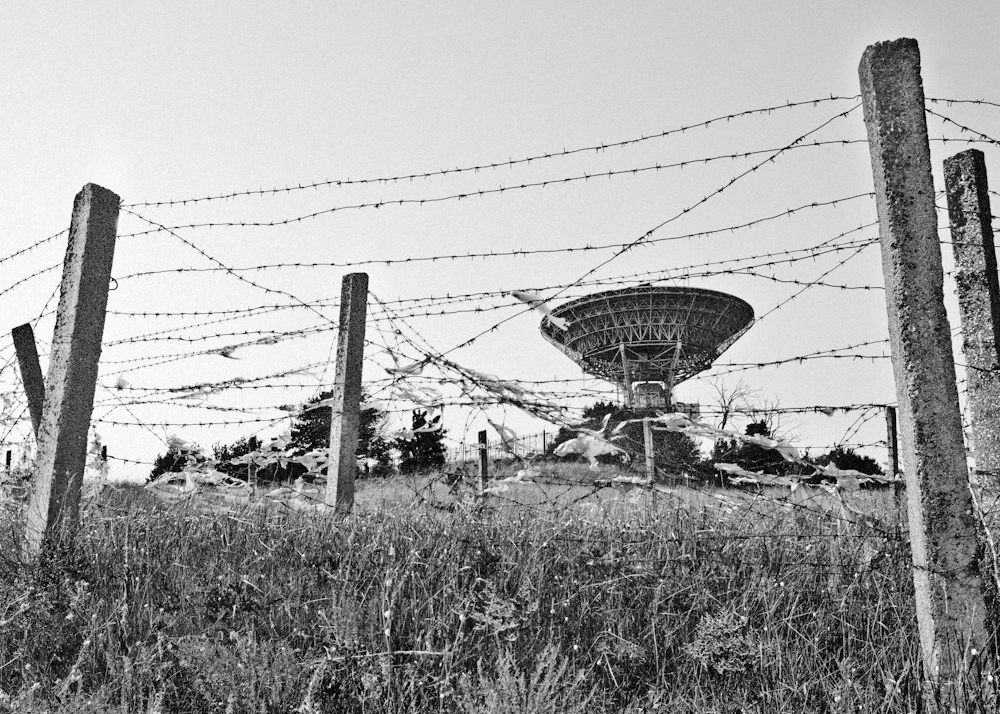
“Sure you can go in,” he said, “but there is nothing to see.”
We entered and crossed what used to be a “moon dome”, where the lunar topography was replicated and Lunokhod rovers were tested. Demolition crews destroyed it a decade ago and the landscape is now an apocalyptic maze with new types of craters and boulders. Perhaps this is the type of terrain future spacecraft should experiment with. A mile later we reached the old TNA-400 antenna.
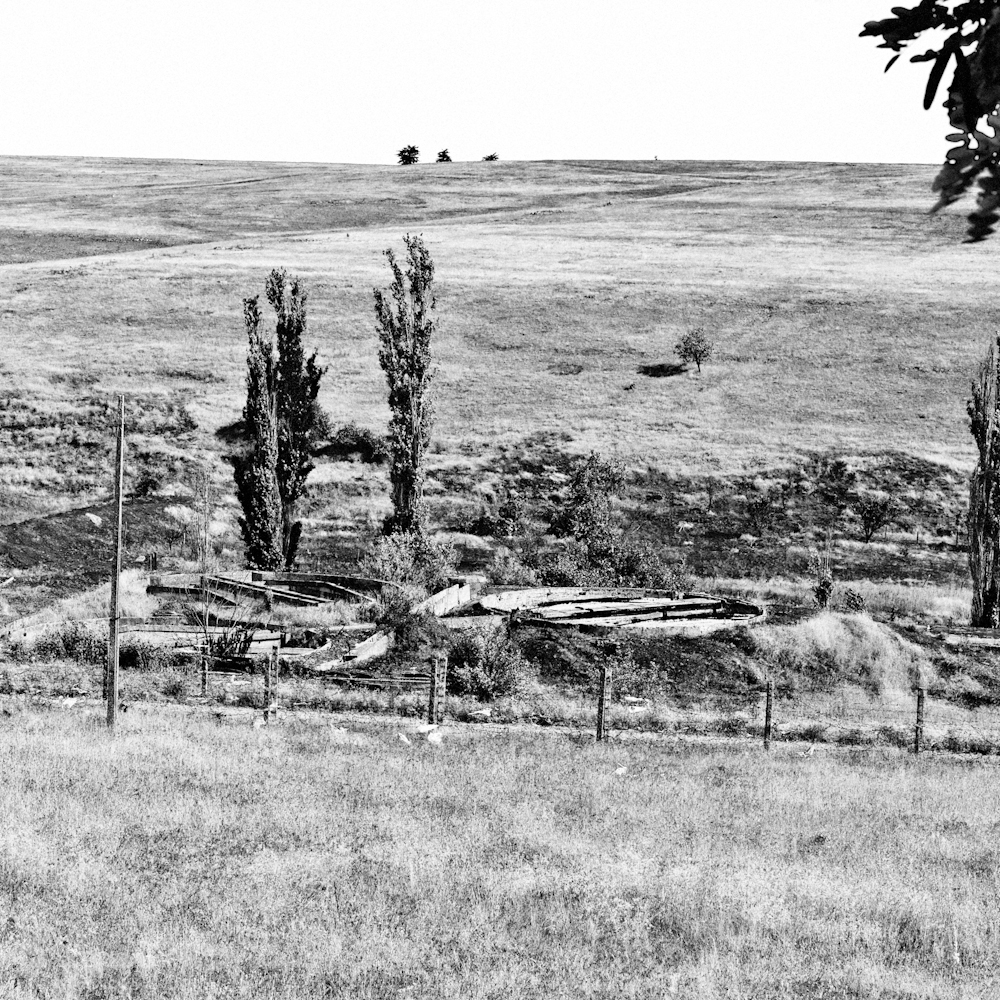
I had time to, literally, take only one picture. Suddenly, two dogs rushed over growling, and blocked the path behind us. A middle-aged woman followed, shouting and calling somebody on her phone at the same time. “Give me your camera! Give me your film!”
Film…
The word is an anachronism, like something left behind on the shelves of a Soviet commissary store. That small detail in syntax revealed how far NIP-10 had drifted from its pioneering origins into an archaic orbit. And yet ironically, it was in NIP-10, that some of the world’s first digital images were ever recorded. Twenty-nine frames from the far side of the moon were taken on 35mm film, developed aboard a satellite, and sent back to Earth in modulate frequency with a resolution of 1,000 x 1000 pixels
Surely this historical footnote was lost on her.
“Can’t you see this is a restricted area? You can’t be here!” I looked over at the holes in the fence, and at the rusting wire. Then I gazed above me at the 70 meters of corroding metal that was visible for miles around.
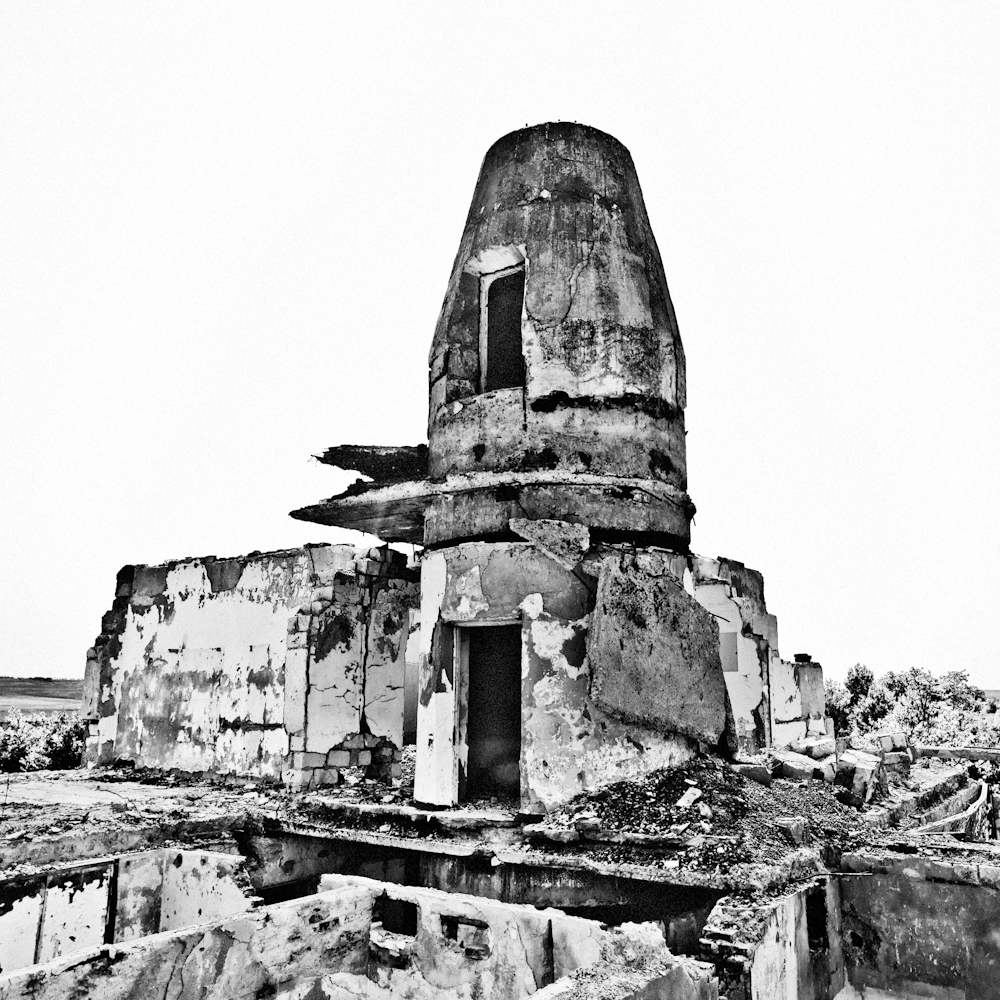
Her words enveloped so many of the contradictions that insert themselves into Shkolnoe’s brief history. Yes, this was once restricted space, but sending messages to the cosmos is hard to keep secret—it is akin to hiding this monolithic antenna in a field of golden wheat. What was once pioneering technology is now mundane, and long since stopped living here.
Currently, photographers have the legal right to freely visit NIP-10. In theory, restrictions are a legacy of Soviet times, and archaic, like film. She kept rambling loudly, “Some idiot crawled under the wire a few months ago and posted his pictures on the Internet, now everybody wants to come here.” In practice, NIP-10 is restricted to a past the buried and forgot it.
Those first digital images of the dark side of the moon were printed on thermal paper, but if they were to somehow be transferred from the analog negatives or magnetic tapes they were stored on, and shown on a computer screen today, their resolution would offer details never seen before. Resurrected, film has its virtues. Like those digital negatives, Shkolye’s past, although discarded and largely unknown, is worth revisiting.
We walked away.
It was easier to keep quiet than to argue the material and philosophical discrepancies in her logic. An hour later I returned alone, but followed her cue, and entered under the wire on the south end of the compound. The abandoned antenna was still there, pointing to the sky.
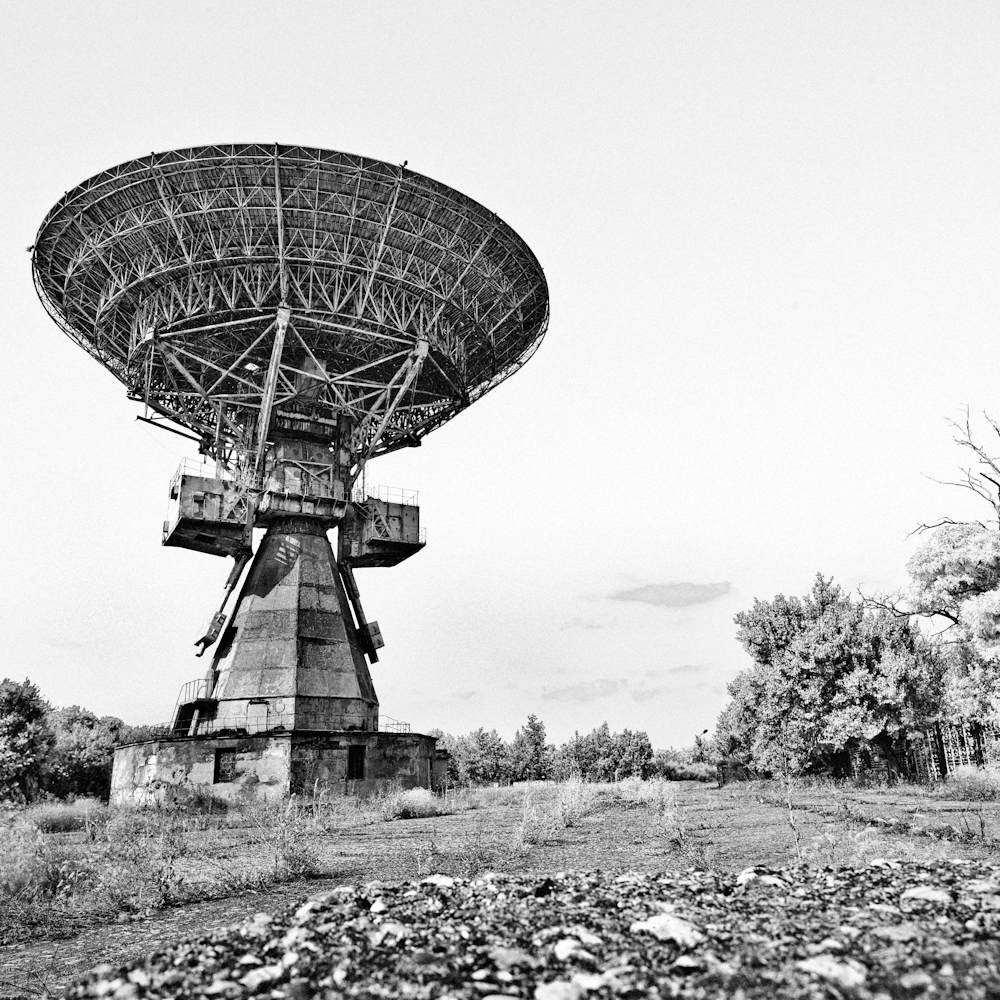
A History of Tracking Station NIP-10
Officially established in 1957, as NIP-10 (Land Measuring Point 10), Shkolye was part of the first generation of 13 Soviet space telemetry tracking stations. The first six stations were completed by 1956, but were limited to using weak radar systems and telescopes.
On the eve of the first Sputnik launch no NIP had the capacity to actively track or to interact with the satellite. All they could do was pick-up the radio emissions from Sputnik 1 once it was in orbit. This was still the case a couple of months later when Laika was launched into space aboard Sputnik 2. (Click here to hear the frequency of Sputnik 1)
It was not until 1959, with the launch of Sputnik 3 that NIP-10 began its key role in advancing deep space exploration. It initiated during Luna 9’s mission, when it recieved the first images of the far side of the moon. The feat was repeated with the first images of Venus, from the Venera 13 spacecraft.
The first cameras in space used 35mm photographic film and developed them in the satellite. The negatives were then scanned and sent by FM waves to Shkolnoe. There, the telemetry was recorded on a magnetic tape, a photographic film recorder and thermal paper display for instant viewing. In effect, these were among the first ever digital pictures, and the precursors to what we now take for granted in the average DSLR camera and inkjet printer.
One year later, the Shkolnoe station incorporated a transmitter antenna, known as TNA – 400. Measuring 32m in diameter, it was the first antenna, and for eight years, the only antenna, capable of sending signals over 300 million kilometers. Although the signal reaching Venus and Mars was only 15 Mhz, this was enough to give spacecrafts operating instructions with time lags of only a few minutes.
In the fields around the antenna, the Soviet Missile and Space Program built a moon dome. It covered one hectare and was made to resemble the surface of the moon by re-creating 16 craters and 150 boulders of all sizes. The Soviet Lunokhod moon rovers were successfully tested there.
Following break-up of the Soviet Union, NIP-10 and the garrison in Shkolnoe passed over to Ukrainian authorities. The soldiers were disbanded, the moon dome was destroyed, and many of the research facilities were demolished. The antenna remains and is rumored to still be operational.
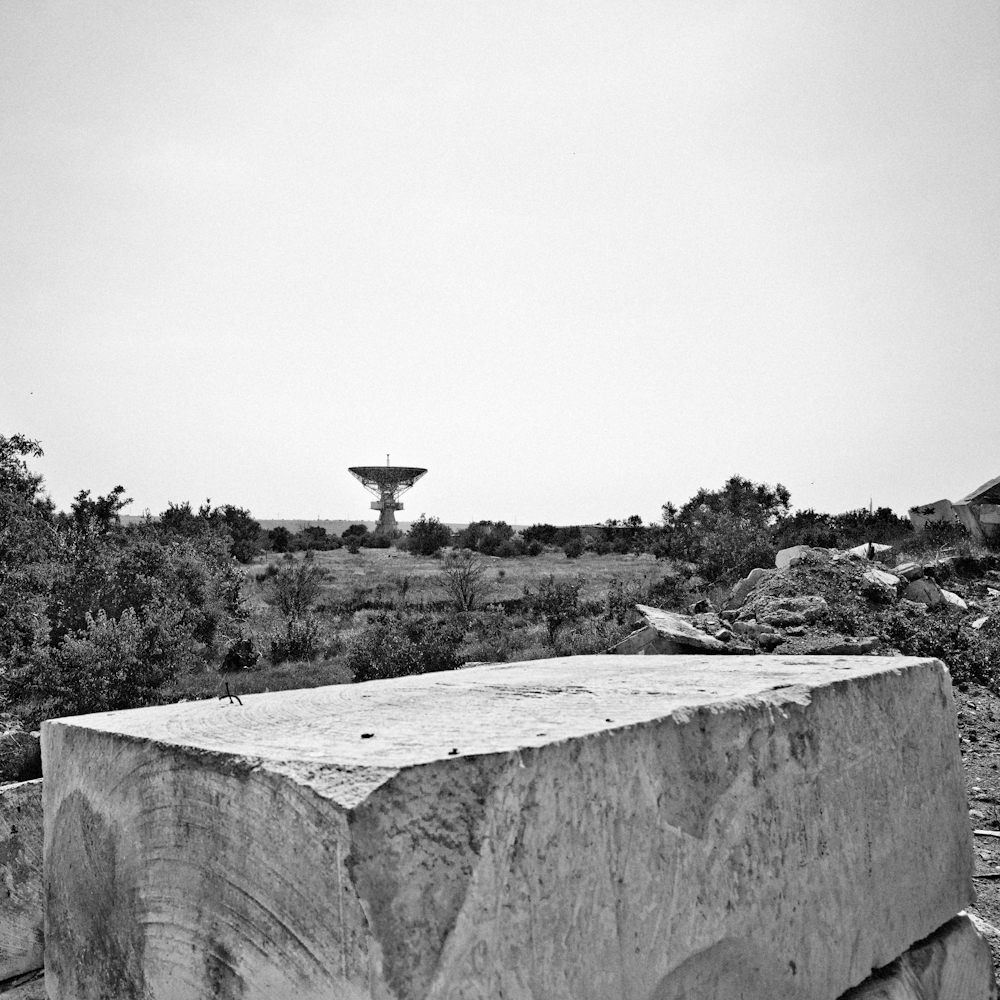

Entertaining writing. Good stuff.
Good article once again! Can you visit freely?